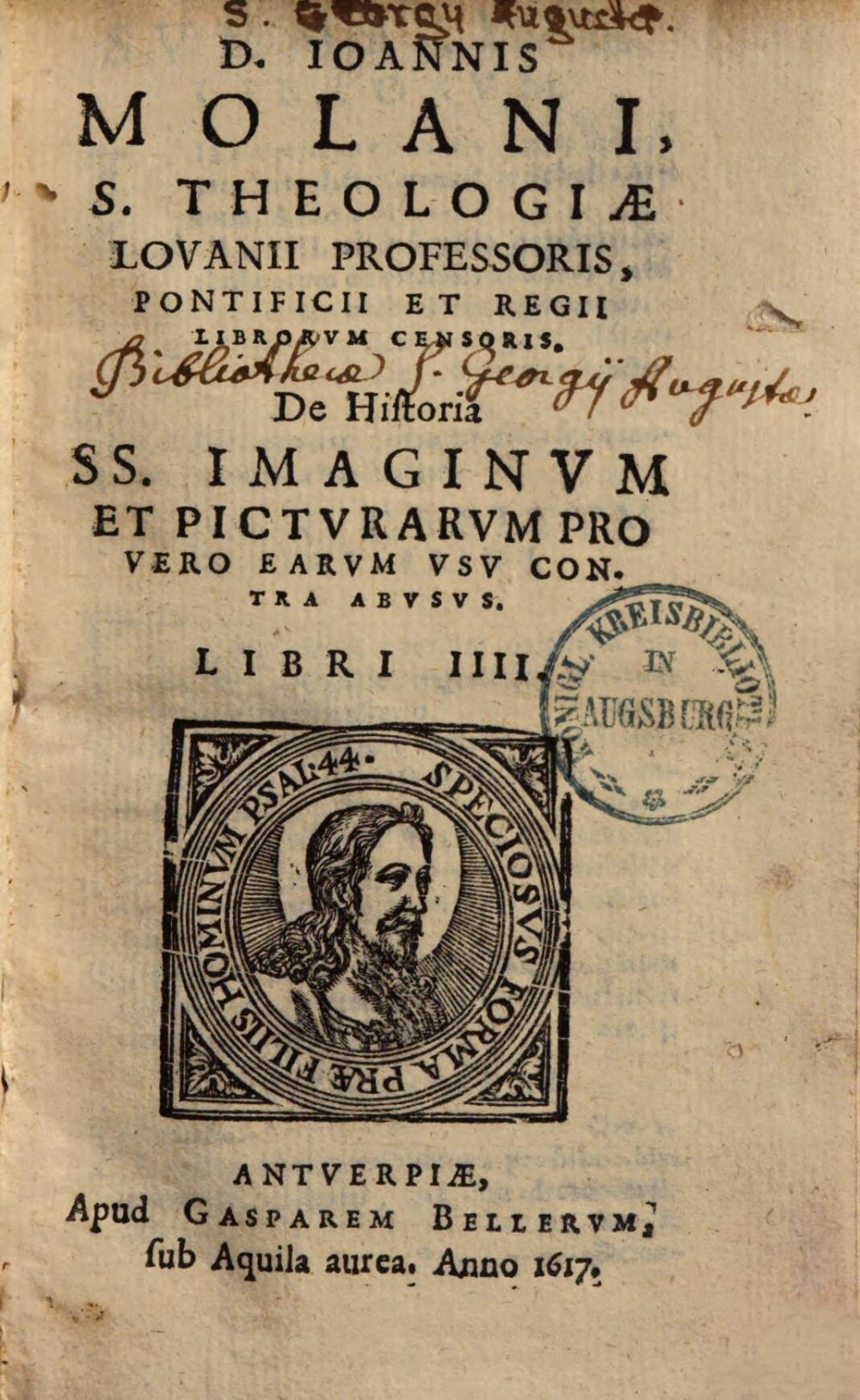
Augsburg, Staats- und Stadtbibliothek — Th H 1475. Digital Reproduction: München, Bayerische Staatsbibliothek, 2015.
In book 2, chapter 28, Molanus continues the discussion started in the previous chapter on images that contain an error but do not pose a real danger, in this chapter the main focus is on iconographies regarding Jesus Christ. The chapter thus fits in the greater scheme created by the author in the work in which he categorises images and the errors they contain, whether these are to be condemned or not, and according to what or whom. In general, Molanus argues that paintings containing the discussed errors do not have t be removed, as long as the provincial council of the Church does not decide otherwise.
The fourth case discussed by Molanus is the depiction of Christ kneeling on the Cross praying to his Father. According to Molanus, showing Christ in this position is humiliating and not in correspondence with the writings of the commentators; correct is that he prayed to the Father, but without kneeling.
“One painting also contains a gross error: it shows the Saviour kneeling on the Cross in prayer before his Father. Gregory of Nazianzus, in Book IV of his Theology, writes against this way of painting: ‘Jesus, our Advocate, does not prostrate himself at the feet of his Father, nor does he fall at his knees like the begging slaves. This idea of servility and an unworthy spirit is to be refused. For it is not for a father to demand this, nor for a son to accept it. Christ indeed prays to the Father, but without humbling himself, without begging him. In fact, he entered heaven as a priest into the holy of holies, because he shed his own blood to present himself in our favour before the face of God. There, by showing his body, he solicits and appeals, that is, advocates for us.’
“Erronea item pictura est, et quidem nimis crasse, quae exprimit Salvatorem coram patre suo orantem genibus flexis super patibulum crucis. Contra quam Gregorius Nazianzenus ait lib. 4 de Theologia Paracletus ‘Iesus non supplicantiu servorum more ante pedes patris pronus voluitus, eiusque genibus accidit. Apage hanc vere servile et spiritu indignam cogitationem. Neque enim hoc desposcere patris est neque filii se admittere. Orat quidem Christus Patrem, sed neque humilando se, neque supplicando. Verum introivi in coelum tanquam Pontifex in Sancta Sanctorum per proprium sanguinem, ut appareat vultui Deu pro nobis. Ibi sui corporis ostensione flagitat, intercedit, interpellat, sive postulat pro nobis.'”
Molanus 1996, 202, n. 3.



